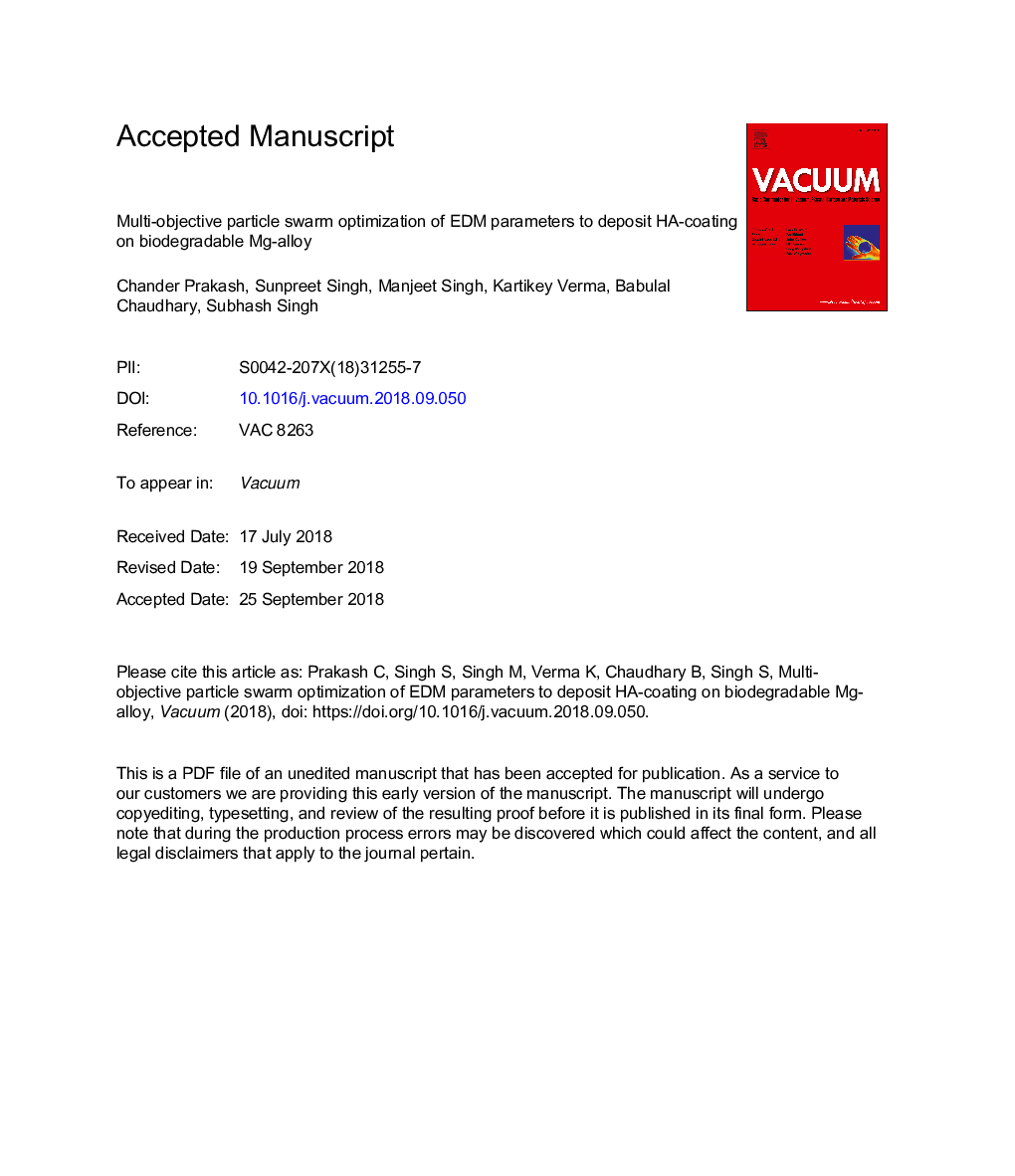| Article ID | Journal | Published Year | Pages | File Type |
|---|---|---|---|---|
| 11026530 | Vacuum | 2018 | 36 Pages |
Abstract
The present research work is aimed to discuss a novel method of depositing hydroxyapatite coats, with interconnected pores, on the surface of bio-degradable MgZnMn alloy by using hydxroxyapatite (HA) powder mixed electric discharge machining (HAM-EDM) process. The parameters of HAM-EDM process has been optimized using multi-objective particle swarm optimization (MO-PSO) technique to determine the optimal levels of concentration of hydroxyapatite powder (CHA), peak-current (Ip), pulse-on (Ton), and pulse-off (Toff). The surface roughness (SR), thickness of recast layer (RLT), and micro-hardness (MH) were chosen as output response characteristics. The experiments were performed according to L27 orthogonal array and an empirical model has been developed to interpret the co-relation amongst input and output parameters. A number of optimal solutions (â¼100) were obtained by MO-PSO technique, where all responses were optimized. Among them, best optimal condition is to deposit biomimetic HA-containing layer with low SR (0.70â¯Î¼m), low RLT (11.85â¯Î¼m) and high MH (246 HV) was CHAâ¯=â¯5.28â¯g/l, Ipâ¯=â¯3.48 A, Tonâ¯=â¯40.33â¯Î¼s, and Toffâ¯=â¯109.29â¯Î¼s? Further, the specimens produced were characterized, morphologically and topologically, and revealed the existence of hydroxyapatite (HA) layer with interconnected pores of 5-10â¯Î¼m size. The EDS spectrum showed that presence of Ca, P, and O on the modified surface, which conferred the deposition of HA-layer on the surface. The XRD pattern investigations of modified surface confirmed the formation of various biocompatible phases, which enhanced the mechanical properties, corrosion and osseintegration characteristics.
Related Topics
Physical Sciences and Engineering
Materials Science
Surfaces, Coatings and Films
Authors
Chander Prakash, Sunpreet Singh, Manjeet Singh, Kartikey Verma, Babulal Chaudhary, Subhash Singh,
